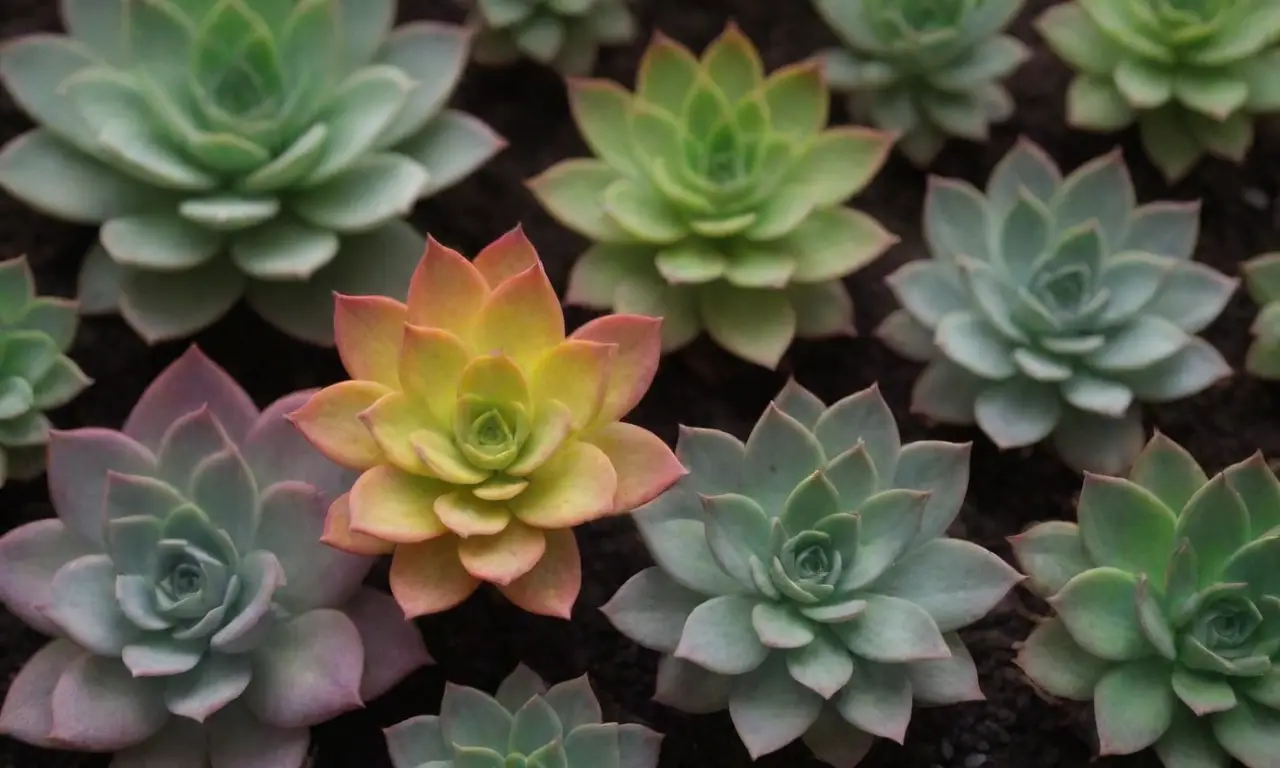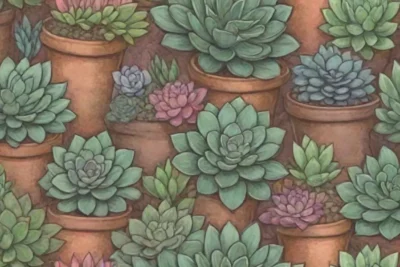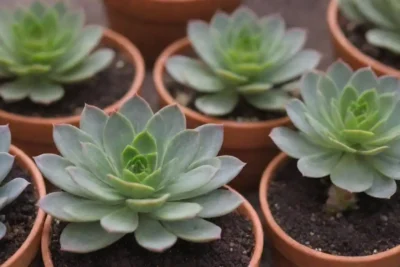
Exploring How Temperature Affects Succulent Growth Behavior

Introduction
Succulents, with their plump, fleshy leaves and captivating forms, have become increasingly popular among plant enthusiasts and interior decorators alike. These remarkable plants are well-known for their ability to thrive in arid environments, thanks to their efficient water-storage capabilities. However, understanding how temperature affects the growth behavior of these plants is crucial for both casual growers and professional horticulturists looking to optimize their care methods. Variations in climate and habitat can significantly influence the physiology, metabolism, and ultimately the growth patterns of succulents.
In this article, we will delve into the intricate relationship between temperature and succulent growth behavior. We will explore the physiological responses of succulents to various temperature ranges and the implications of these responses for optimal care. Additionally, we will examine how temperature interacts with other environmental factors such as light and humidity to affect overall plant health. By the end, readers will have a thorough understanding of how to tailor their growing conditions to support lush, vibrant succulents.
Understanding Succulent Physiology
Succulents are unique in their adaptation to harsh, dry environments. Their leaves, stems, and roots are specialized to store water, enabling them to survive during prolonged dry periods. This remarkable adaptation is governed by a combination of anatomical and physiological traits. For instance, the presence of thickened cuticles and a waxy exterior helps minimize transpiration, allowing these plants to retain moisture.
However, these adaptations come with challenges when temperature fluctuates. At optimal temperatures, which generally range between 65°F to 80°F (18°C to 27°C), succulents exhibit vigorous growth, forming lush foliage and vibrant blossoms. Conversely, if temperatures rise above this range—especially beyond 90°F (32°C)—succulents may enter a state of stress. High temperatures can cause the plant to lose moisture rapidly through transpiration, leading to wilting, reduced growth rates, and in extreme cases, death.
Interestingly, many succulent species also experience a type of dormancy during extreme cold. Although some succulents can tolerate low temperatures—some as low as 20°F (-6°C)—prolonged exposure can lead to cellular damage. During cold spells, succulents typically slow their metabolic processes, conserving energy and resources. Understanding these physiological adaptations is essential for ensuring that succulents thrive in the home or garden setting.
Optimal Temperature Ranges
It's crucial to recognize that different species of succulents thrive at various temperature ranges. Cacti, for example, are typically more tolerant of high temperatures compared to other succulent types. Many cacti species can withstand temperatures ranging from 70°F to 100°F (21°C to 38°C), provided they receive adequate light and moisture. On the other hand, Aeoniums and Echeverias, which are non-cactus succulents, prefer milder conditions, ideally around 60°F to 75°F (15°C to 24°C).
Identifying the specific temperature preferences of your succulents is paramount for successful growth. Most growers will find that maintaining a stable temperature is more effective than sudden fluctuations. For instance, while a plant may tolerate short periods of extreme temperature, prolonged exposure can lead to stress and a compromised structure. Hence, knowing not just the average temperatures but also the maximum and minimum tolerable temperature ranges for each succulent species can significantly influence your plant care strategy.
 Unveiling the Secrets of Succulent Growth Patterns for Beginners
Unveiling the Secrets of Succulent Growth Patterns for BeginnersHeat and Water Management
As temperatures rise, succulents will require adjustments to their watering schedules. High temperatures increase evaporation rates, which can lead to dehydration if the plants are not watered appropriately. A common misconception is that increasing temperatures necessitate more frequent watering. However, overwatering during hot periods can be just as detrimental. It's important to assess the soil moisture level regularly, ensuring the substrate dries out sufficiently between watering sessions.
Additionally, the type of soil used can significantly influence how well succulents retain or drain water. A well-draining potting mix, often composed of a blend of potting soil, perlite, or sand, allows for proper aeration and enhances drainage, reducing the risk of root rot. As such, the heat requirement extends beyond simply the temperature of the air—appropriate soil management becomes critical to maintaining healthy succulent growth.
Furthermore, during peak summer months, utilizing shade cloths or moving pots to shaded areas can protect succulents from the harsh midday sun. Conversely, during cooler months, it may be appropriate to move the plants to areas where they can receive more sunlight. This sensitivity to environmental conditions makes understanding microclimates within your home or garden vital to fostering a healthy growing environment for your succulents.
Temperature and Photosynthesis
Photosynthesis is the cornerstone of how plants, including succulents, generate their energy. The efficiency of this process is significantly impacted by temperature. At lower temperatures—particularly below 50°F (10°C)—the rate of photosynthesis begins to decline swiftly. Succulents will grow sluggishly, often resulting in stunted growth and decreased vigor. The low metabolic activity means that they cannot effectively convert sunlight into energy for growth.
On the flip side, temperatures that are too high can also hinder photosynthesis. Beyond a certain threshold, generally around 90°F (32°C), enzymes involved in the photosynthetic process can denature, leading to reduced photosynthetic efficiency. This can cause a slowdown in growth and may lead to the yellowing of leaves, a common sign of stress in succulents. Therefore, finding a balance is key. Ideal temperatures will enhance the photosynthetic rate without crossing into thresholds that cause stress or damage.
Moreover, the efficiency of photosynthesis is also affected by light intensity. Plants utilize sunlight to convert carbon dioxide and water into glucose and oxygen. An increase in temperature correlates to an increase in metabolic demands; thus, sufficient light is necessary for optimal growth at warmer temperatures. Hence, as temperatures rise, ensuring adequate lighting conditions becomes vital for maintaining robust succulent growth.
Humidity and Temperature Interactions
The interaction between temperature and humidity plays a crucial role in succulent care. While succulents are adept at surviving in dry conditions, excessive heat with low humidity can lead to rapid moisture loss, resulting in wilting or shriveling of leaves. Conversely, high humidity can create an environment conducive to fungal diseases and root rot, especially if temperatures are also elevated.
 How to Identify the Growth Stages of Your Favorite Succulents
How to Identify the Growth Stages of Your Favorite SucculentsMost succulents thrive in conditions with humidity levels between 30% and 50%. This balance enables the plants to maintain adequate moisture while also allowing for effective transpiration processes. In warm, humid environments, it’s essential to increase air circulation around the plants to prevent disease incidence. Using fans or strategically spacing plants apart can help maintain that necessary airflow, ensuring succulents remain healthy during hotter months.
Importantly, using humidity domes or greenhouses can artificially regulate humidity levels, providing a controlled environment that can benefit succulents in specific conditions. However, growers must remain vigilant; during periods of high humidity combined with heat, daily monitoring is necessary to prevent the onset of ailments such as powdery mildew or root rot.
Conclusion

In conclusion, the relationship between temperature and succulent growth behavior is a multifaceted one, encompassing various factors, including physiology, watering, photosynthesis, and humidity. To nurture thriving succulents, understanding their specific temperature requirements and their capacity to withstand fluctuations is critical. Each succulent species has its preferences, making careful selection and appropriate environmental conditions crucial to their success.
As you embark on your succulent-growing journey, prioritize a stable temperature range, appropriate watering techniques, and an understanding of how light and humidity interact with temperature. By doing so, you will significantly enhance the growth and health of your succulents, fostering plants that are not only resilient but also vivid and captivating in your collection.
Ultimately, the beauty of succulents lies not just in their unique aesthetic appeal but also in the experience of nurturing them through the nuances of their growth behaviors. With the right knowledge and strategies in place, you can ensure that your plants not only survive but flourish, providing joy and tranquility in your home or garden.
 The Influence of Temperature on Succulent Growth Patterns
The Influence of Temperature on Succulent Growth PatternsIf you want to read more articles similar to Exploring How Temperature Affects Succulent Growth Behavior, you can visit the Growth Patterns category.





You Must Read